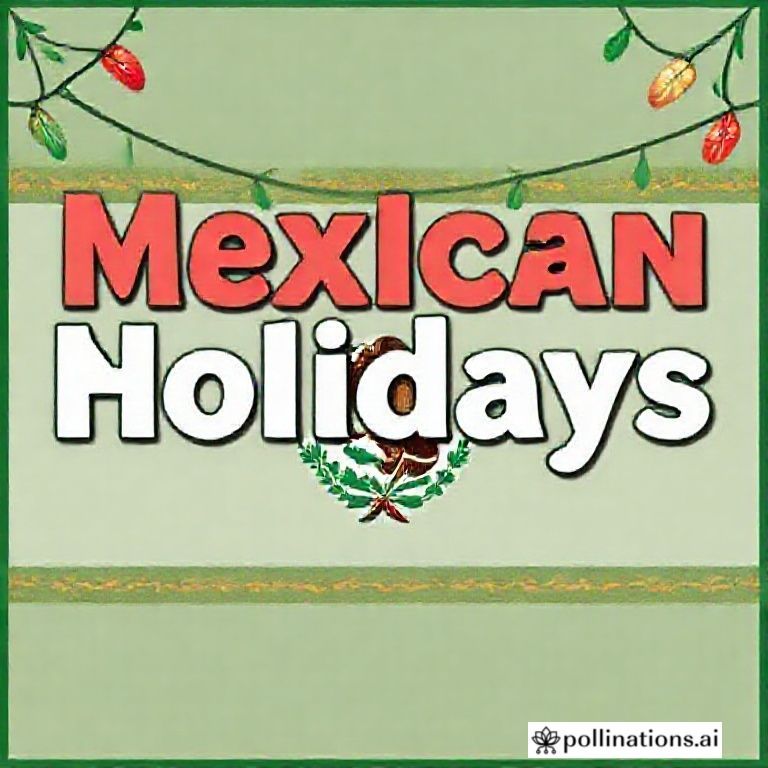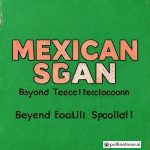Mexico, a land brimming with vibrant culture and rich history, boasts a calendar filled with national holidays that are celebrated with immense enthusiasm. These holidays aren’t just days off work; they’re opportunities to connect with the nation’s heritage, honor its heroes, and revel in its unique traditions. From patriotic displays to colorful festivals, experiencing these celebrations firsthand offers an unforgettable glimpse into the heart of Mexico.
Understanding the significance of these holidays and how they are celebrated can deepen your appreciation for Mexican culture, whether you’re a long-time resident, a frequent traveler, or simply curious about the world. So, let’s delve into some of the most important Mexican national holidays and explore the fascinating ways they are commemorated.
Celebrating Independence Day: El Grito de Dolores
Perhaps the most significant of all Mexican national holidays is Independence Day, celebrated on September 16th. This day commemorates the beginning of Mexico’s struggle for independence from Spanish rule, sparked by the famous “Grito de Dolores” (Cry of Dolores) on September 16, 1810. The “Grito” was a call to arms issued by Father Miguel Hidalgo, a priest in the town of Dolores (now Dolores Hidalgo, Guanajuato).
The Festivities
- El Grito Re-enactment: On the evening of September 15th, Mexicans gather in town squares across the country to witness a re-enactment of the “Grito.” The president of Mexico, along with state governors and local officials, leads the ceremony, shouting the traditional phrases: “¡Viva México!” (Long live Mexico!). The crowd responds with enthusiastic cheers.
- Parades and Fireworks: September 16th is marked by grand parades featuring military personnel, school children, and civic organizations. The streets are adorned with Mexican flags and decorations in the national colors: green, white, and red. The celebrations culminate in spectacular fireworks displays that light up the night sky.
- Traditional Food and Music: No Mexican celebration is complete without delicious food and music. During Independence Day, you’ll find an abundance of traditional dishes like pozole, enchiladas, and chiles en nogada. Mariachi bands fill the air with their lively music, adding to the festive atmosphere.
Día de Muertos: Honoring the Departed
Día de Muertos, or Day of the Dead, is a unique and deeply meaningful Mexican holiday celebrated on November 1st and 2nd. It’s a time to remember and honor deceased loved ones. Unlike the somber mourning often associated with death in other cultures, Día de Muertos is a celebration of life and a belief that the spirits of the departed return to visit their families.
Traditions and Offerings
- Ofrendas (Altars): Families create elaborate altars adorned with offerings for the deceased. These often include photos of the departed, their favorite foods and drinks, candles, flowers (especially marigolds, known as “cempasúchil”), and sugar skulls.
- Visiting Cemeteries: Families visit cemeteries to clean and decorate the graves of their loved ones. They bring food, drinks, and music to share with the spirits. The atmosphere is often festive, with families picnicking and reminiscing about the deceased.
- Sugar Skulls and Pan de Muerto: Sugar skulls, often decorated with colorful icing and the names of the deceased, are a popular treat during Día de Muertos. Pan de Muerto, a sweet bread flavored with anise and orange zest, is another traditional food associated with the holiday.
Revolution Day: Remembering the Fight for Justice
Revolution Day, celebrated on November 20th, commemorates the start of the Mexican Revolution in 1910. This revolution was a major armed struggle that transformed Mexican society and politics. It was sparked by widespread social and economic inequality and the desire for a more just and democratic society.
Commemorating the Revolution
- Parades and Re-enactments: Revolution Day is often marked by parades that depict scenes from the revolution. School children and community groups dress up as revolutionary figures and perform skits that recreate historical events.
- Sporting Events: Traditional Mexican sports, such as charrería (a type of rodeo), are often featured during Revolution Day celebrations. These events showcase the skills and traditions of Mexican cowboys.
- Remembering the Heroes: The day is also a time to remember and honor the heroes of the revolution, such as Francisco “Pancho” Villa and Emiliano Zapata, who fought for social justice and land reform.
Christmas in Mexico: A Festive Season
While Christmas is celebrated worldwide, Mexico has its own unique traditions and customs that make the holiday season particularly special. The celebrations begin in mid-December with “Las Posadas” and continue through January 6th, with the Epiphany.
Unique Christmas Traditions
- Las Posadas: These are a series of nine nightly processions that re-enact Mary and Joseph’s search for lodging in Bethlehem. Families go from house to house, singing traditional songs and asking for shelter. The processions culminate in a celebration with food, drinks, and piñatas.
- Nochebuena (Christmas Eve): This is the most important night of the Christmas season. Families gather for a special meal, often featuring dishes like bacalao (salt cod) and roast turkey. After dinner, many attend midnight mass (Misa de Gallo).
- Día de Reyes (Epiphany): On January 6th, Mexicans celebrate the arrival of the Three Wise Men. Children leave out their shoes the night before, hoping to receive gifts from the Magi. Families also share a Rosca de Reyes, a sweet bread decorated with candied fruit and a hidden figurine of the baby Jesus. The person who finds the figurine must host a party on Candlemas Day (February 2nd).
Conclusion
Mexican national holidays are more than just dates on a calendar; they are vibrant expressions of the nation’s history, culture, and spirit. Whether it’s the patriotic fervor of Independence Day, the poignant remembrance of Día de Muertos, the historical reflection of Revolution Day, or the festive cheer of Christmas, each holiday offers a unique opportunity to connect with the heart and soul of Mexico. By understanding and participating in these celebrations, you can gain a deeper appreciation for the rich tapestry of Mexican life.
If you enjoyed this article, don’t forget to explore more inspiring stories on Life in Mexico!
IMAGE: A vibrant and colorful scene depicting a Día de Muertos celebration in Oaxaca, Mexico. Focus on a family gathered around a brightly decorated ofrenda (altar) adorned with marigolds, candles, sugar skulls, and photos of deceased loved ones. The family members are dressed in traditional attire, with painted faces resembling sugar skulls. The mood is festive and reverent, with soft, warm lighting from the candles. In the background, other families can be seen celebrating in the cemetery. Style: Realistic, vibrant, and culturally authentic.


